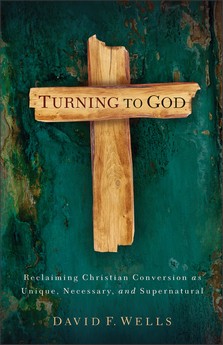 The nature and question of true conversion is a hot topic in the church today. At the Southern Baptist Convention this year, David Platt found himself in a bit of hot water by questioning the validity of the “sinner’s prayer.” The debate there hinges on the exact usefulness of a canned prayer to bring about salvation. No one questions whether or not prayer is important in conversion, but whether or not it is sufficient. Does a prayer offered by a 16 year old who attends church for 6 months and never returns really constitute salvation? If so, then what do we do with the Biblical teaching on repentance? If not, then why do we continue to lift up the sinner’s prayer as the end-all-be-all of evangelism? Much of this is reminiscent of the Lordship Controversy of the late eighties and nineties which brought evangelical leaders out on both sides.
The nature and question of true conversion is a hot topic in the church today. At the Southern Baptist Convention this year, David Platt found himself in a bit of hot water by questioning the validity of the “sinner’s prayer.” The debate there hinges on the exact usefulness of a canned prayer to bring about salvation. No one questions whether or not prayer is important in conversion, but whether or not it is sufficient. Does a prayer offered by a 16 year old who attends church for 6 months and never returns really constitute salvation? If so, then what do we do with the Biblical teaching on repentance? If not, then why do we continue to lift up the sinner’s prayer as the end-all-be-all of evangelism? Much of this is reminiscent of the Lordship Controversy of the late eighties and nineties which brought evangelical leaders out on both sides.
In Turning to God, David Wells seems content to stay above the fray and out of the argument. Though this book was originally published in 1989, most of the primary voices in the Lordship debate are left out of Wells’ bibliography. Rather than engage the arguments, Wells seems content to engage the text of Scripture. His purpose in writing this book is to place the emphases for conversion in the places where the NT writers place the emphasis,
The New Testament writers view conversion dynamically–as something one does–and they interpret it theologically with words such as faith, repentance, grace, forgiveness, and regeneration.
Far from arguing that conversion is solely an act of the will, however, Wells presents conversion as an act of God upon sinners that brings about a response. Nevertheless, his emphasis in this book is more on the converted life than on the Ordo Salutis.
For Wells, conversion is more than the moment of salvation. Conversion is the starting point,
Conversion is not an isolated event but is related to the entire life of faith that follows from it. It is the moment of birth into a new life. It is like a doorway into a room. A person is born to live, not to linger on the edge of the womb in a time limbo. A person opens a door not for the pleasure of standing forever on the threshold but to enter the room. The evangelical world has strangely perverted this truth. Evangelicals often make the test of spiritual life one’s willingness to testify about the moment of birth. Describing one’s sensations in passing through the doorway is considered proof that one is in the room! This shifts the focus from where it ought to be–the evidence of the Spirit’s renewing work in producing a God-centered life, a God-fearing heart, and God-honoring character and witness–and places it on a person’s autobiographical account of the conversion crisis. The only real proof of our conversion is an obedient and fruitful life.
There is more to this book than Well’s emphasis on fruit-bearing in the Christian life. For instance, his work on conversion of religious outsiders (Eastern religions) is very important. Wells is also a bit ahead of his time in 1989 as he speaks of the materialistic worldviews of the West that create a barrier to conversion.
Wells is also hard hitting on the topic of evangelism, claiming,
We cannot claim that Christian faith has been communicated until it has been understood, and most secular people are no longer in a position to understand Christian truth if they hear only a minimal, packaged version of the gospel and are asked for immediate assent.
His approach to evangelism is reminiscent of the approaches being hearlded today by men like Randy Newman, Sean McDowell, and Norm Geisler and organizations like Evangelism Explosion. Interestingly, Wells’ encouragement to approach evangelism over a longer period of time came nearly 20 years before the rest of the evangelical world took notice.
In conclusion, this is a great book. It’s a pretty easy read, and it honestly brought me to tears as I considered the importance of conversion in the lives of my own young children.

